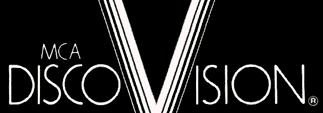|
They drove from Indianapolis, New York and Miami. They camped in front of the stores before midnight. They phoned in their orders from as far as Acapulco and Paris. By noon on the first day of sales, thousands had mobbed the three Atlanta stores to scoop up the video age's wonder product -a phonograph that plays pictures with motion and color and stereophonic sound. The customers who were too late to get the Magnavision videodisc players loaded up on the DiscoVision records. When V -Day was over, it was estimated that there were at least 100 potential buyers for every videodisc player in stock.
The trouble was that the stores in the pilot city of Atlanta had a grand total of 37 Magnavision players to sell. Within a few weeks of opening day, Dec. 15, 1978, a New York Times classified ad offered a $695 player for "$10,000 or best offer."
Thus two corporate giants in show business and electronics - MCA Inc. (which made the discs) and Magnavox's parent, N.V. Philips of the Netherlands (players) -made good their pledge to bring their system to the public in 1978, with 16 days to spare. Now, more than a year later, players and discs are available only in Atlanta, Dallas and Seattle.
Year 1 of the videodisc was marred by start -up headaches. Magnavox and Philips had planned to make and sell more than 20,000 players in 1979, but a well -informed guess would put the actual total at about 5000. Even to support this small number of players, discs were in short supply all year. Although MCA had promised discs that played for one hour per side (a two-hour movie on a two - sided disc), virtually all of those sold could play only 30 minutes per side. When Magnavox introduced the player, it had a suggested list price of $695. This soon escalated to $775. Discs of recent movies, which originally sold at $15.95, climbed to $24.95.
This flexibility, plus the system's capability for operation by minicomputer to achieve many special effects, spurred General Motors to order more than 10,000 of a more sophisticated industrial version of the player to demonstrate features of its cars in dealer showrooms. These were made and delivered last year by Universal Pioneer, a Japan -based company then owned jointly by MCA and Pioneer Electronics. The versatility of this system for demonstration and training purposes, as well as its ability to store up to 54,000 pictures on one side of a disc, created a sensation in the data -storage industry, and mighty IBM entered the videodisc scene by buying a 50- percent interest in DiscoVision from MCA.
Pioneer Electronics, the Japanese - owned hi -fi company, plans to introduce its own consumer version of the Philips - MCA player in the United States at about midyear, competing with Magnavox but able to play the same MCA DiscoVision programs.
Other videodisc players are on the way. The most imminent is RCAs SelectaVision VideoDisc, under development since the 1960s. This is a no- frills, needle -in the-groove system designed to play discs forward only at normal speed, up to two hours per disc. Taking dead aim at the current vulnerability of the Philips -MCA system on deliveries and price, RCA promises a full -scale launch of its system through 5000 dealers coast to coast in the first quarter of 1981, about the same time Magnavox and Pioneer go nationwide. The RCA player is target -priced at less than $500, and the discs will be "competitive" with MCAs.
The Philips -MCA and RCA systems are incompatible -that is, records made for one can't be played on the other. In addition, a half -dozen other systems have been demonstrated, all incompatible with the two predominant systems and with each other.
A videodisc player attaches to the television set at the antenna terminals, in the same manner as a videocassette recorder (VCR). But, unlike a VCR, it's designed to play back only. All proposed systems can be connected to a home stereo, if desired, for better audio, and the discs can carry stereophonic sound. The picture and sound qualities of videodiscs are far superior to those of videocassettes and to received broadcast pictures. While prerecorded videocassettes are inherently expensive ($40 to $100 for a movie), discs can be stamped out at little more than the cost of phonograph records.
A battle royal for the videodisc market is shaping up between the RCA and Philips -MCA formats, with some dark - horse entries possible, probably from Japan. The television networks aren't saying much, but they're seriously concerned about the potential competition for viewers' time. (RCA forecasts that disc players will be in 30 to 50 percent of color -television homes within 10 years.) Meanwhile, the three networks' parent companies, plus PBS, are up to their eyeballs in preparation for disc programming. Most active, of course, is RCA, where former NBC president Herbert Schlosser has assembled a 300 -title SelectaVision premiere catalogue.
Magnavision's first year doesn't prove much, except that you can sell 5000 of anything- already proven by the electric shaving -cream warmer and four -channel stereo. By its very nature, the videodisc must become a mass - market product to exist. That doesn't mean thousands of players in American homes, but millions - millions per year. In the world of videodiscs, a small success will be a flop.
|
